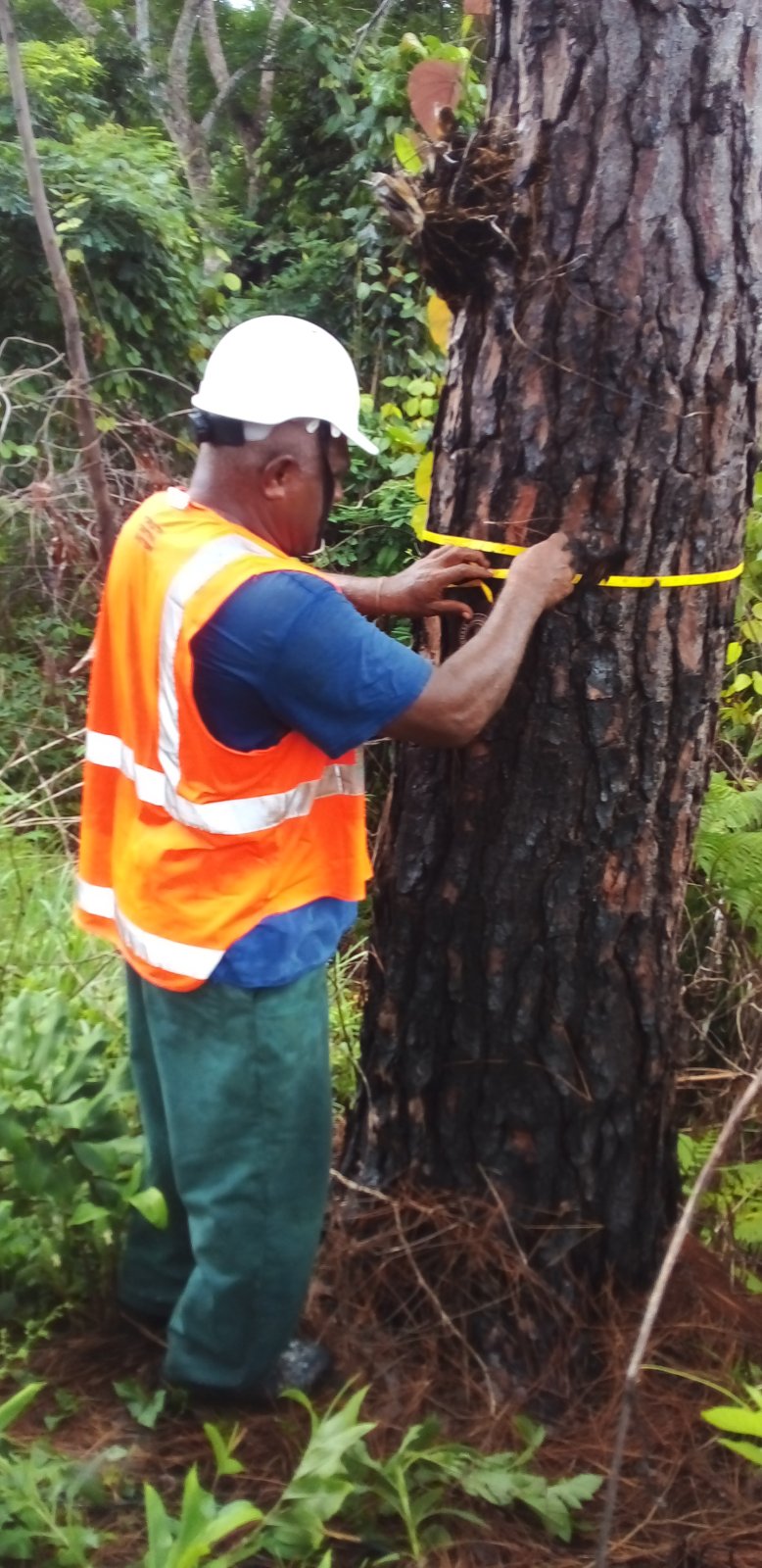
Diameter Limit Table (DLT) Supports Sustainable Forest Management
The United Nations Strategic Plan for Forests (UNSPF) 2017-2030 provides a global framework for actions at all levels to sustainably manage all types of forests and trees outside forests, and to reduce deforestation and forest degradation. On the national level, major forestry related commitments like the Fiji National Development Plan (NDP), the Emission Reduction Program (ERP) and the Forest Act 1992 provide the fundamentals for both, sustainable forest utilization and conservation.
Conventional Logging
Conventional Logging (CL) however does not contribute to these commitments: CL removes all valuable timber species from 35cm DBH (diameter at breast height), leaving behind a degraded and heavily disturbed open forest, comprising mainly of low value tree species, meaning lower increment, long felling cycles and smaller logs. This also negatively impacts the forest structure and biodiversity.
According to Forestry Executive Director Operations and Service Tevita Bulai “ to counteract this negative situation, in the late 1980s Fiji began developing a concept for the sustainable management of native forests: with the establishment of the Natural Forest Management Pilot Project (NFMPP) which was launched in Nakavu village, Namosi in 1989. The main goal of NFMPP was to develop technical management tools to enable the effective implementation of silviculture and management measures for forest owners, logging companies and forestry administration to contribute to the sustainable management of forests.”
He further added that “the rationale behind developing an alternative to CL was to adapt the felling limit to the growth potential of each tree species and to integrate as many species as possible into the harvesting concept. Thus, from almost all species only a small number of trees are selected for harvesting instead of the CL practice which involves almost all trees (including seed trees) of a few tree species only”.
The required information for practical application was condensed into what is now referred to as the “Diameter Limit Table” (DLT) which is major outcome of NFMPP and a core component of the Sustainable Forest Management concept.
Sustainable Forest Management and the Development of the Diameter Limit Table (DLT) for Fiji Whether we leave them alone or use them wisely, forests are renewable. Trees regenerate naturally, grow and develop to large sizes, and eventually die. They provide critical habitats for plants and animals, clear water and air, recreational opportunities, and an array of other benefits to the people who live in and visit the region. With appropriate Silviculture, landowners can sustain their forests indefinitely while using them today for many different purposes.
That is the essence of sustainable forestry. It means keeping forests healthy, dynamic, and available for future generations. This includes monitoring forest health and other conditions, maintaining appropriate levels of stocking and structure, enhancing the growth and vigor of desirable species, and regenerating new trees and forests when the current ones reach maturity. These goals are realized through silviculture, which includes several methods that tend the trees growing on a site and regenerate new ones at appropriate times. And because trees of good form and marketable species have value for a host of products that people depend on for daily living, landowners can sell excess and mature trees to generate revenue and pay off their investments in ownership and management.
After the successful implementation of the first DLT in 1992, the concept was then further developed and extended in 2002 in another project in the Drawa Block, Vanua Levu.
A modified DLT was developed in 2013 based on the experiences gained from the second rotation harvesting at Nakavu as well as on the data from the 2006 National Forest Inventory. The modified DLT known as the “ML40” was presented in a forestry stakeholder consultation in 2014.
Fiji’s forests have more than 300 tree species. Naturally, the tree species reach different (species-specific) dimensions (trunk and crown diameter, height). Some tree species, like dakua makadre can reach diameters at breast height (DBH) of more than 100cm.
This species-specific natural growth potential is ignored in current Conventional Logging (CL) practices which allow the extraction of any desired species from 35cm DBH. In consequence, the remaining forest after logging is heavily disturbed in its structure and, even worse, the required seed trees for adequate regeneration especially of the valuable species are almost completely removed. Thus, the regenerated forest will be dominated by less or not desired tree species and also prone to the introduction of invasive species that may threaten the entire forest ecosystem. The economic value as well as the ecological value of the forest will decrease from felling cycle to felling cycle.
For 30 years, Fiji has developed a science-based DLT concept that is unique and exemplary for the South Pacific. Unlike CL higher wood increment rates, the application of DLT will enable a shorter recovery timeframe for the forest, resulting in relatively reduced felling cycles and maintaining relatively big volumes of the harvested logs.
Commercial harvesting in Fiji largely follows conventional practices which allows the removal of all merchantable species in a logging coupe that have a girth of 35cm and above. In 2012, the Fiji Forest Harvesting Code of Practice (FFHCOP) was revised, incorporating results from the Nakavu sustainable forest management research site. The results present diameter limits for key merchantable timber species. Coupled with the FFHCOP, conditions for application of reduced impact logging can be achieved in Fiji.
Moving Forward
The adoption of sustainable forest management principles such as reduced impact logging, diameter limit tables and management of large areas of forest using sustainable principles will not only address forest degradation and deforestation, but will also contribute to livelihoods, income generation and employment, carbon sequestration, water, soil and biodiversity conservation